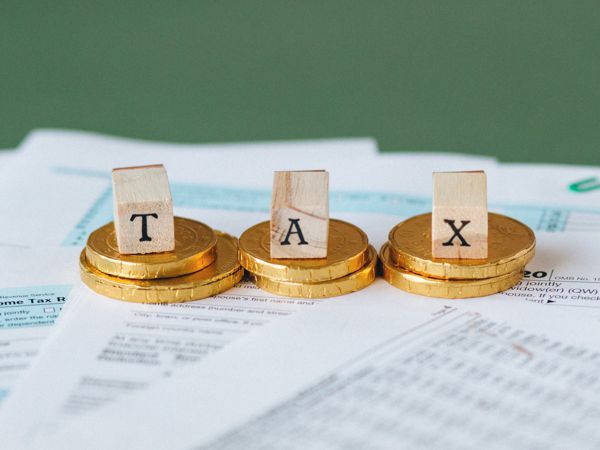
Uncle Sam Wants To Help Buyers Of New & Used Machinery
Machinery plays a vital role in our economy. It helps us produce food, build infrastructure, construct homes and offices, and transport materials more efficiently. Investments in machinery are a major reason behind our high productivity levels.
Congress understands that investing in capital goods like machinery and research and development is crucial for long-term economic growth. That's why these investments often receive favorable tax treatment.
One such benefit is bonus depreciation, which encourages businesses to invest in new and modern equipment. This allows companies to deduct a large portion of the cost upfront, reducing their tax liability and boosting cash flow.
What Types Of Purchases Qualify For Bonus Depreciation?
According to current IRS guidelines, qualified property includes tangible personal property with a recovery period of 20 years or less. Most heavy machinery falls under this category, including tractors, excavators, cranes, forklifts, and more.
Used machinery can also qualify, as long as it was not previously owned by the buyer. The rules changed in 2017, making used equipment eligible for bonus depreciation for the first time.
However, real estate improvements and land purchases do not qualify. Also, there are specific limits when it comes to vehicles.
In 2017, the tax law was updated to shorten the recovery period for farm equipment from seven to five years (for regular depreciation, not bonus). But certain items like grain bins and fences still have longer recovery periods.
How Is Bonus Depreciation Calculated?
Depreciation spreads the cost of long-term assets over their useful life. Businesses use different methods for book and tax purposes. Book depreciation is smoother and used for financial reporting, while tax depreciation is based on IRS rules and may allow faster deductions.
In 2021, bonus depreciation allows you to deduct 100% of the asset’s value immediately. This can be combined with Section 179 deductions, where applicable. Tax professionals often recommend using the full Section 179 limit first, then applying bonus depreciation to the remaining balance.
You can also choose to opt out of bonus depreciation for an entire year if needed, but this decision applies to all similar assets purchased during that time.
What Is Bonus Depreciation In 2021?
As of now, the bonus depreciation rate is 100% for qualifying assets. However, this percentage will gradually decrease over the next few years. While future changes are possible, many expect the high rate to remain in place due to ongoing support for business investment.
Here's a quick overview of the bonus depreciation schedule:
| Year | Bonus Depreciation Deduction |
| 2017 | 100% |
| 2018 | 100% |
| 2019 | 100% |
| 2020 | 100% |
| 2021 | 100% |
| 2022 | 100% |
| 2023 | 100% |
| 2024 | 80% |
| 2025 | 60% |
| 2026 | 40% |
| 2027 | 20% |
| 2028+ | 0% |
Examples Of Bonus Depreciation For New & Used Machinery Purchases
Example 1: You buy a used Caterpillar 301.8 mini excavator for $25,000. Since it wasn’t previously owned by you and is used for business, you can take the full $25,000 as bonus depreciation.
Example 2: A new HLA attachment for your machine costs $3,000. This qualifies for bonus depreciation too, as attachments used with machinery count as part of the overall purchase.
Example 3: A used John Deere lawn tractor for $1,200 is primarily used for personal purposes. Therefore, it doesn't qualify for bonus depreciation.
Example 4: If you used Section 179 to write off a used dozer, you can't apply bonus depreciation to the same asset.
Example 5: If you choose not to apply bonus depreciation to one truck, you must apply the same rule to all similar trucks purchased in the same year.
How Does Bonus Depreciation Work With Section 179?
Both Section 179 and bonus depreciation help reduce your tax bill by allowing faster deductions. Section 179 lets you expense the full cost of qualifying purchases in the year they're bought, rather than depreciating them over time. This is especially beneficial for small and medium-sized businesses.
Bonus depreciation, on the other hand, allows you to deduct a percentage of the asset’s cost in the first year. Unlike Section 179, there's no dollar limit, and it applies to all similar assets purchased in the same year.
While both offer significant benefits, they work differently. Section 179 gives you more control over how you treat the asset, while bonus depreciation requires a uniform approach across similar purchases.
The best strategy is usually to combine both: use Section 179 first, then apply bonus depreciation to the remaining balance. This can maximize your tax savings.
Important Note
This blog post is meant to provide general information about bonus depreciation and its application to machinery purchases. It is not intended as tax advice, and we are not licensed tax professionals. Always consult with a certified accountant or tax advisor before making any decisions related to your taxes.
Laws and regulations change over time, so it's important to stay informed and seek professional guidance to ensure compliance and optimize your tax situation.
Resources
IRS Form 4562 for depreciation
How a business owner got a free truck
Find Similar Articles By Topic
#agriculture #transportation #material handling #construction #taxes
Pneumatic Sealing Machine,Pneumatic Sealer,Pneumatic Packing Machine,Pneumatic Impulse Sealer
Hangzhou Jingyi E-commerce Co.,Ltd , https://www.jypackmfg.com
![<?echo $_SERVER['SERVER_NAME'];?>](/template/twentyseventeen/skin/images/header.jpg)